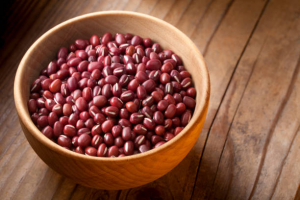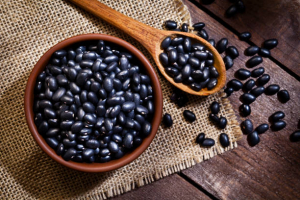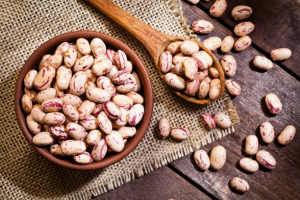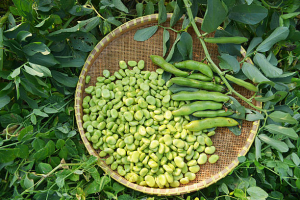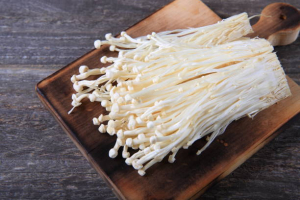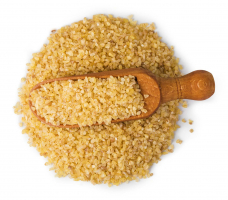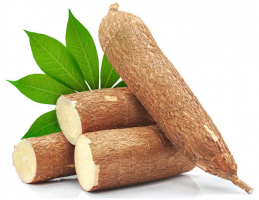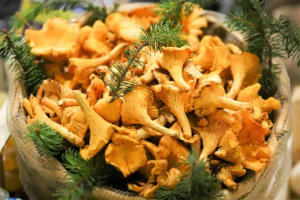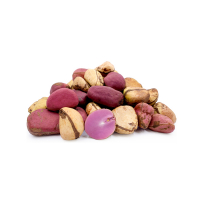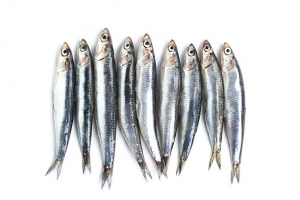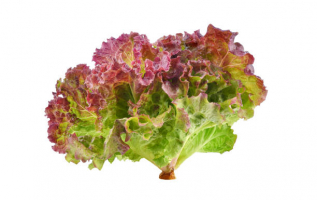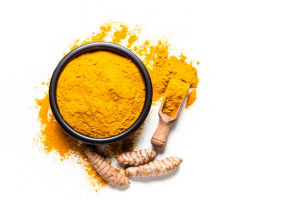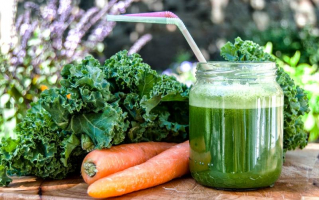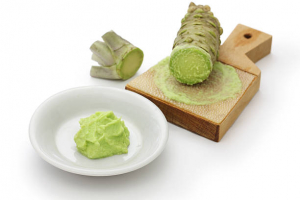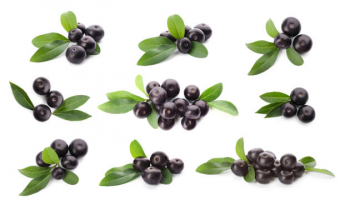Top 9 Health Benefits of Mung Beans
Small, green mung beans (Vigna radiata) are a member of the legume family. Since ancient times, they have been raised. Mung beans originated in India but later ... read more...migrated to China and several regions of Southeast Asia. These beans are offered fresh, as sprouts, or dried, and they have a mildly sweet flavor. Although they aren't as common in the US, most health food stores sell them. Mung beans are quite adaptable and are frequently used in salads, soups, and stir-fries. They are said to treat a variety of diseases and are rich in nutrients. Here are the greatest advantages of mung beans for your health.
-
Mung beans are rich in vitamins and minerals. One cup (7 ounces or 202 grams) of boiled mung beans contains:
- Calories: 212
- Fat: 0.8 grams
- Protein: 14.2 grams
- Carbs: 38.7 grams
- Fiber: 15.4 grams
- Folate (B9): 80% of the Reference Daily Intake (RDI)
- Manganese: 30% of the RDI
- Magnesium: 24% of the RDI
- Vitamin B1: 22% of the RDI
- Phosphorus: 20% of the RDI
- Iron: 16% of the RDI
- Copper: 16% of the RDI
- Potassium: 15% of the RDI
- Zinc: 11% of the RDI
- Vitamins B2, B3, B5, B6, and selenium
One of the best plant-based sources of protein is these beans. These include phenylalanine, leucine, isoleucine, valine, lysine, arginine, and a number of other important amino acids. Your body is unable to manufacture essential amino acids on its own. It's significant to remember that sprouting modifies the nutritional makeup of mung beans because they are also consumed this way. In comparison to unsprouted beans, sprouted beans have fewer calories, and more free amino acids, and antioxidants. Additionally, sprouting lowers phytic acid levels, an antinutrient. Antinutrients can make it harder for minerals like zinc, magnesium, and calcium to be absorbed.
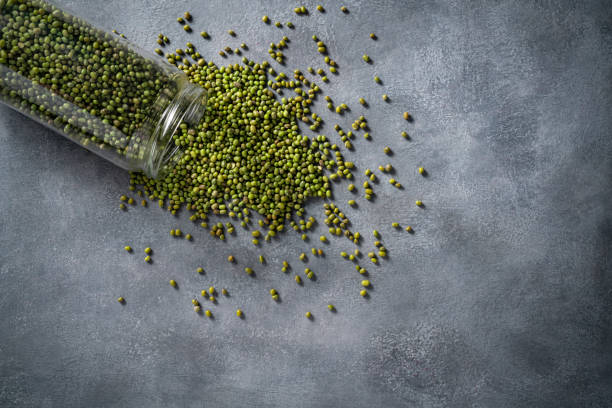
Packed With Healthy Nutrients 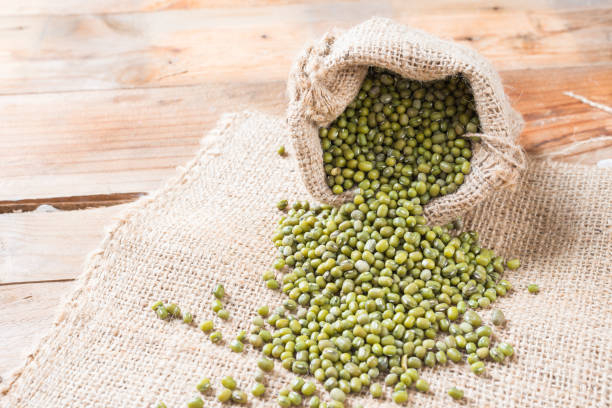
Packed With Healthy Nutrients -
Mung beans are rich in phenolic acids, flavonoids, caffeic acid, cinnamic acid, and other beneficial antioxidants. Free radicals are potentially dangerous chemicals that can be neutralized by antioxidants. Free radicals can interact with biological components and cause havoc when present in large quantities. Chronic inflammation, heart disease, cancer, and other illnesses are linked to this damage. Antioxidants from mung beans have been shown in test-tube tests to be able to counteract free radical damage associated with the development of cancer in lung and stomach cells.
Surprisingly, sprouted mung beans seem to have an even more outstanding antioxidant profile and may have up to six times as many antioxidants as conventional mung beans. However, test-tube studies make up the majority of the study on the disease-fighting capacity of mung bean antioxidants. Before recommendations can be made, more study with humans is required.
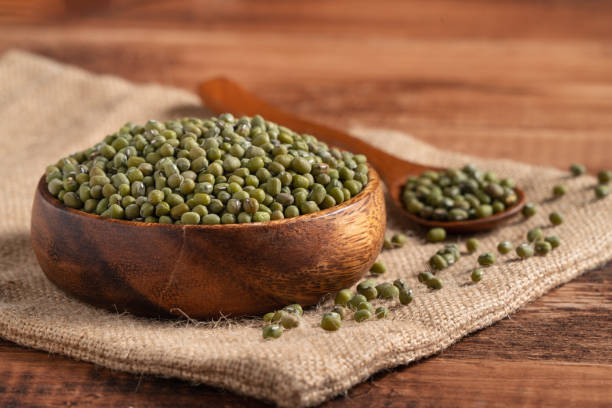
High Antioxidant Levels May Reduce Chronic Disease Risk 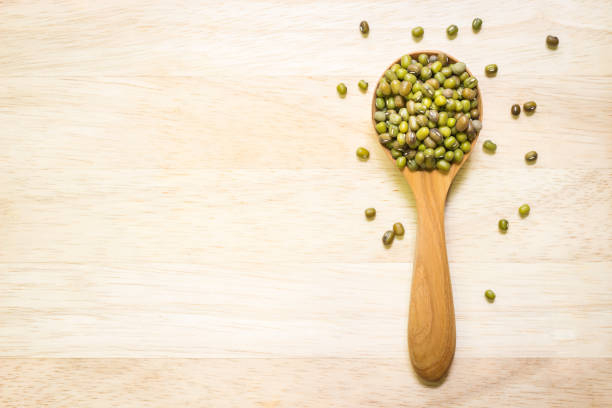
High Antioxidant Levels May Reduce Chronic Disease Risk -
Mung bean soup is a popular summertime meal in many Asian nations. This is due to the fact that mung beans are thought to possess anti-inflammatory characteristics that aid in preventing heat stroke, high body temperatures, thirst, and other conditions. However, given that staying hydrated is a crucial component in preventing heat stroke, several experts dispute if mung bean soup is any better than drinking water. The anti-oxidants vitexin and isovitexin are also present in mung beans.
These antioxidants in mung bean soup may actually help protect cells against damage from free radicals that develop during heat stroke, according to animal studies. As a result, more research, ideally in humans, is required before providing a health recommendation in the field of mung beans and heat stroke.
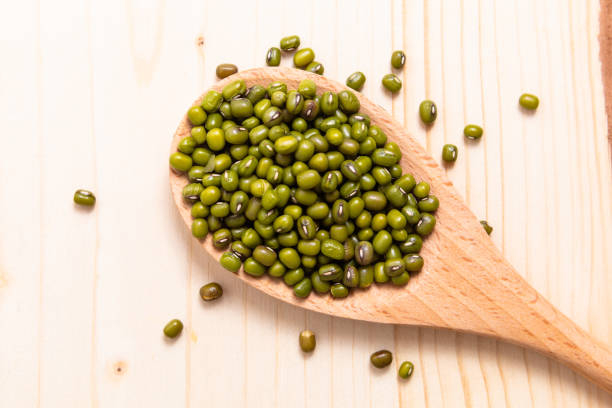
Antioxidants Vitexin and Isovitexin May Prevent Heat Stroke 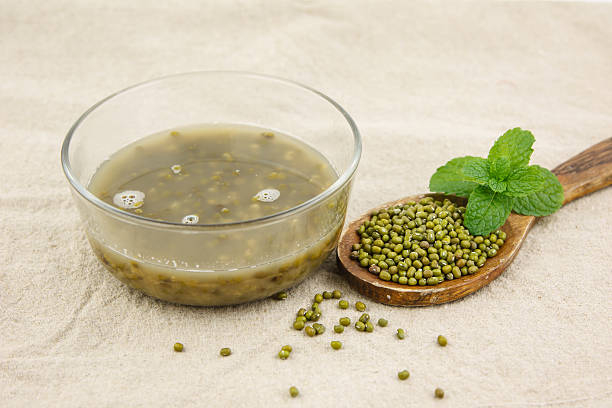
Antioxidants Vitexin and Isovitexin May Prevent Heat Stroke -
Your risk of heart disease may increase if you have high cholesterol, particularly "bad" LDL cholesterol. It's interesting to note that a study suggests mung beans may have abilities to reduce LDL cholesterol. Mung bean antioxidants, for instance, have been demonstrated in animal experiments to lower blood LDL cholesterol and shield the LDL particles from interaction with unstable free radicals.
The consumption of one daily serving (about 130 grams) of legumes, such as beans, also considerably reduced blood LDL cholesterol levels, according to a study of 26 research. A diet high in legumes (apart from soy) can lower blood LDL cholesterol levels by about 5%, according to another study of 10 trials.
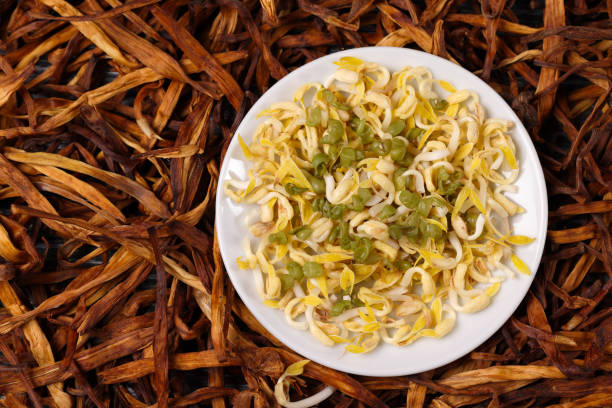
May Lower “Bad” LDL Cholesterol Levels, Reducing Heart Disease Risk 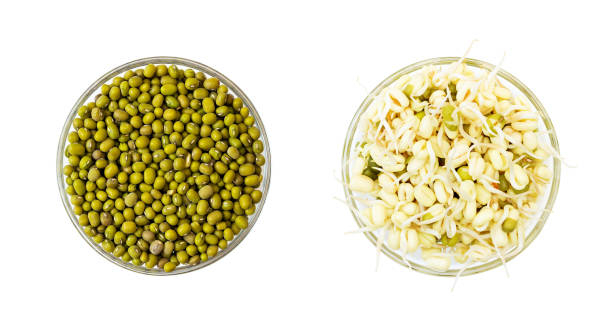
May Lower “Bad” LDL Cholesterol Levels, Reducing Heart Disease Risk -
According to estimates, one in three persons in America has high blood pressure. Because it increases your risk of developing heart disease, the world's top cause of death, high blood pressure is a major health issue. Blood pressure may be lowered by mung beans. They are a good source of fiber, magnesium, and potassium. Each of these nutrients has been associated in studies with a significantly lower risk of high blood pressure.
Increased consumption of legumes like beans also reduced blood pressure in persons with and without high blood pressure, according to a review of eight research. Interesting research has found that specific mung bean proteins can inhibit the enzymes that cause blood pressure to naturally rise in test-tube and animal experiments. How big of an impact these proteins would have on human blood pressure levels is currently unknown.
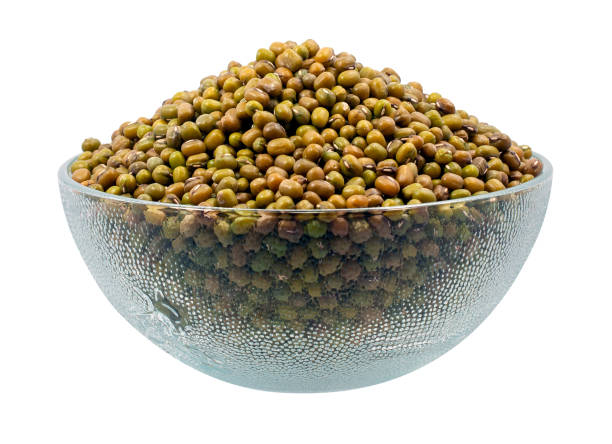
Rich in Potassium, Magnesium and Fiber, Which May Reduce Blood Pressure 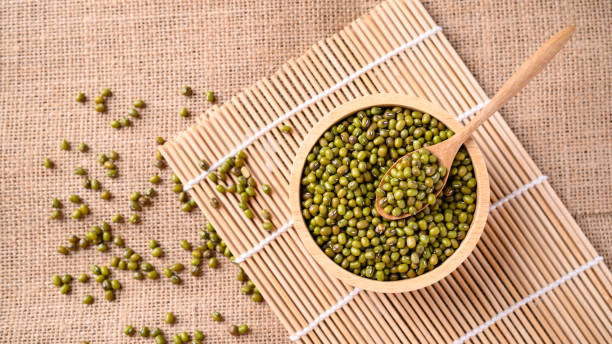
Rich in Potassium, Magnesium and Fiber, Which May Reduce Blood Pressure -
Numerous nutrients found in mung beans are excellent for maintaining good intestinal health. One benefit is that they have a lot of fiber, offering an astonishing 15.4 grams per cooked cup (202 grams). Pectin, a specific kind of soluble fiber found in mung beans, helps to keep your intestines regular by accelerating the passage of food through your gut. Like other legumes, mung beans include resistant starch. Similar to soluble fiber, resistant starch supports the growth of good gut bacteria. Then the bacteria break it down into short-chain fatty acids, particularly butyrate.
Butyrate enhances gut health in a variety of ways, according to studies. For example, it can nourish colon cells, strengthen the immune system of your gut, and potentially reduce your risk of developing colon cancer. Additionally, mung bean carbohydrates appear to be simpler to digest than those in other legumes. As a result, mung beans are less prone to result in flatulence than other varieties of legumes.
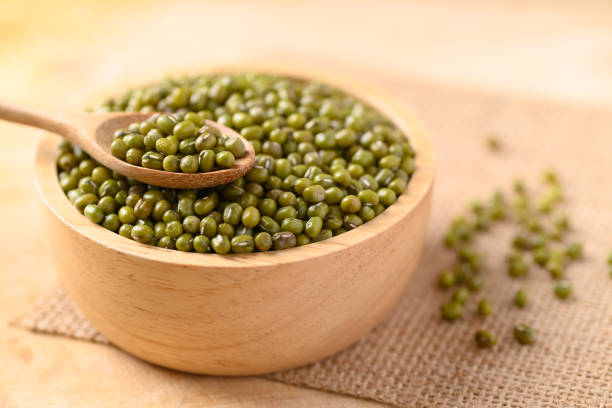
Fiber and Resistant Starch in Mung Beans May Aid Digestive Health 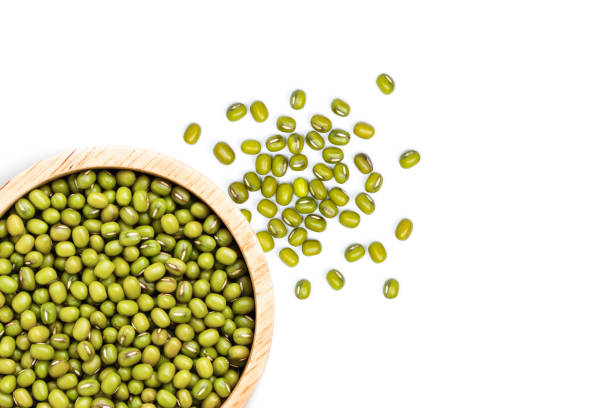
Fiber and Resistant Starch in Mung Beans May Aid Digestive Health -
High blood sugar can be a major health issue if it is not handled. It is a key feature of diabetes and has been connected to other chronic illnesses. Because of this, medical doctors advise people to maintain healthy blood sugar levels. Numerous qualities of mung beans contribute to lowering blood sugar levels.
They include a lot of fiber and protein, which helps to delay the absorption of sugar into the blood. The mung bean antioxidants vitexin and isovitexin have also been demonstrated in animal studies to reduce blood sugar levels and improve insulin efficiency. Mung beans are rich in protein, fiber, and antioxidants that may help reduce blood sugar levels and improve insulin sensitivity.
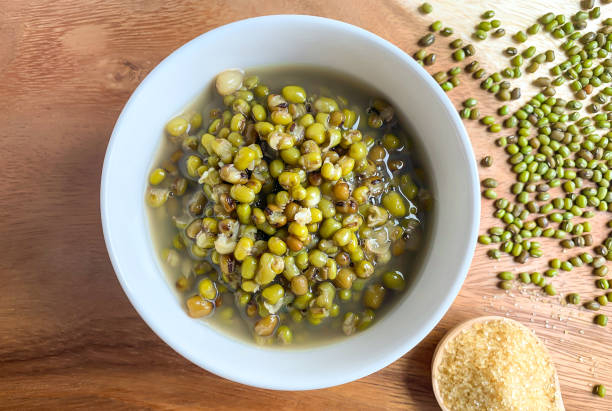
Nutrient Composition May Lower Blood Sugar Levels 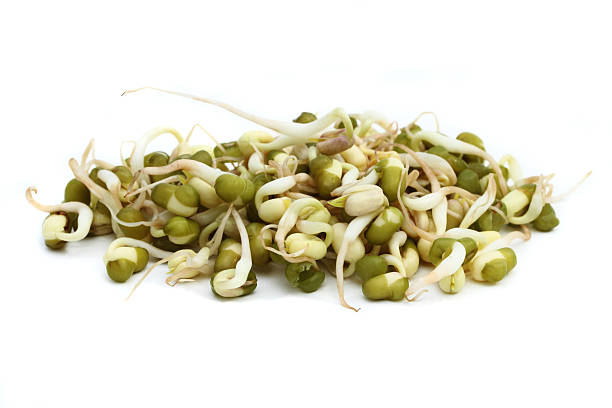
Nutrient Composition May Lower Blood Sugar Levels -
Mung beans are rich in protein and fiber, which can aid with weight loss. Protein and fiber have been demonstrated in studies to inhibit hunger hormones like ghrelin. Further research has revealed that both nutrients can promote the production of hormones like peptide YY, GLP-1, and cholecystokinin that make you feel full.
They might assist with weight loss by reducing your calorie intake by reducing your appetite. In fact, a study of nine research indicated that eating legumes like beans made participants feel 31% fuller on average than eating other dietary staples like pasta and bread.
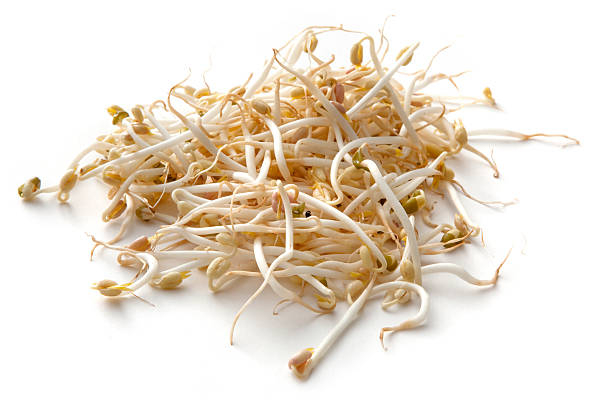
May Promote Weight Loss 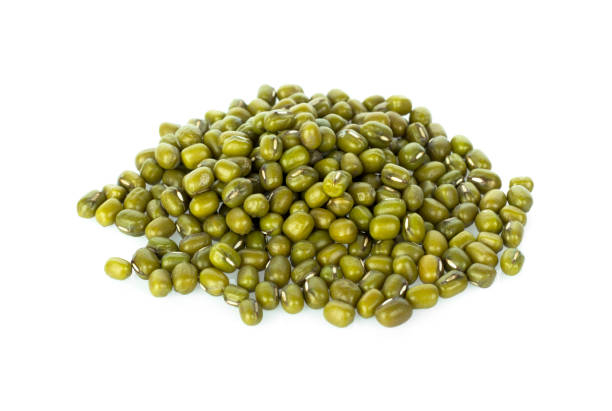
May Promote Weight Loss -
Pregnant women are encouraged to consume a lot of foods high in folate. Your youngster needs folate for healthy growth and development. An increased risk of birth abnormalities has been associated with low folate intake, which is experienced by the majority of women. One cooked cup of mung beans provides 80% of the RDI for folate (202 grams).
They are also rich in iron, protein, and fiber, which are nutrients that pregnant women require more of. However, since they might contain bacteria that could infect a person, pregnant women should avoid eating raw mung bean sprouts. Sprouts and cooked beans should be safe.
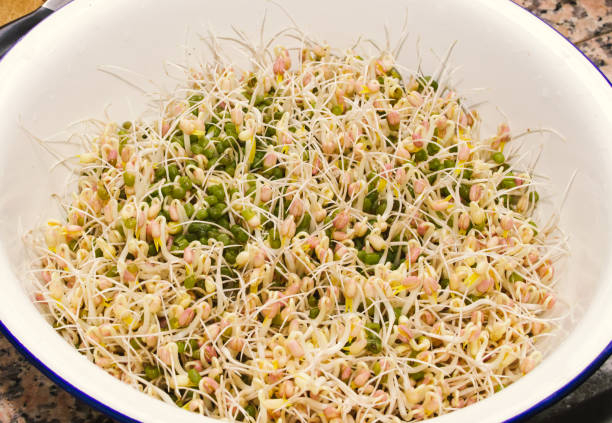
Support a Healthy Pregnancy 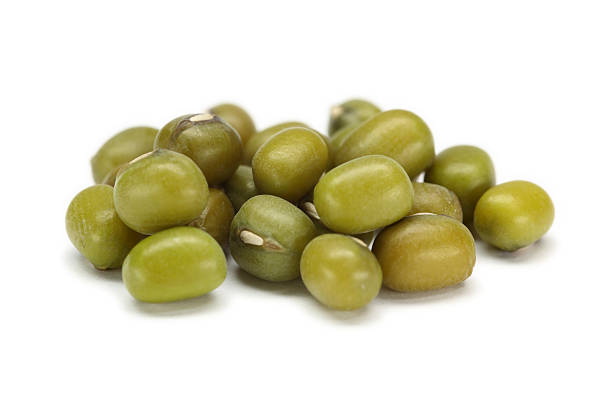
Support a Healthy Pregnancy











